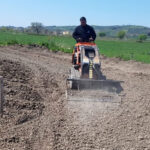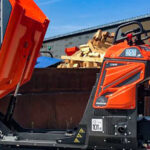One of the structures that allows us to move freely on a daily basis and reach places that would otherwise be inaccessible is the bridge. This engineering construction, which we now take for granted, provides security for the passage of rivers, valleys and other roads below. While bridges were originally built using simple and natural material such as logs and stones, today’s structures are true works of design made of highly resistant materials such as steel and concrete, placed according to architectural laws of extreme stability.
Like any work, however, bridges are also subject to the weakening of time due to wear and tear and the effect of atmospheric agents, which is why it is essential to apply and ensure regular and scrupulous bridge maintenance, avoiding any type of sagging and, therefore, of accident for humans. In order to carry out this task easily and safely, it is advisable to equip operators with special equipment: we will go into this subject in more detail below after a brief overview.
Bridges, viaducts and flyovers: the picture in Italy
Italy is one of the countries in the world with one of the most complex infrastructure networks, right after Japan in terms of kilometres of tunnels, and with a very high ratio of works built per kilometres travelled.
In fact, 60% of all European tunnels are located on the Italian peninsula: these, together with bridges and viaducts, experienced a sudden development in the 1960s with the strong push of the economic boom. The materials they are made of are extremely resistant and able to support high weights to guarantee maximum safety for circulation: they generally consist of steel, reinforced and prestressed concrete.
The subject of the state of health of Italian bridges has now become public knowledge, especially following the recent tragedies that have occurred in recent years in Italy. Among the various problems that can be encountered, corrosion is the main cause of their deterioration, which gradually leads to the high risk of collapse of parts of the construction and, therefore, of the construction itself. It is therefore essential that bridges are carefully and regularly maintained.
How to reach and control the various parts of a bridge?
To carry out an accurate and safe inspection it is important to view every part of the construction, both above and below. To do this, it is necessary to ensure that the inspection is carried out not only in an efficiently and rapid manner, but also in total safety for the operators.
It is for this reason that maintenance operations, especially those underneath the bridge, require special tools to be inspected safely, such as aerial platforms. These machines are not only equipped with tracks that can travel over uneven or irregular terrain, as under bridges and viaducts often are, but they are also able to work with their arms in the negative, i.e. facing downwards.
Cormidi aerial platforms
Among the wide range of machines designed by Cormidi, platforms have been developed to meet the need to move safely and quickly during bridge maintenance.
The aerial platforms developed are in fact a valid aid not only for pruning tall trees, but also for this delicate task; even more so because the KB20 and KB23 Cormidi models are not just any machines but, due to their functions, are unique in their kind. They are multifunctional machines, which means they have underbridge, basket, crane, personnel carrier and winch.
What are their strengths?
Cormidi produces the world’s only three-in-one aerial platforms.
The KB series can be up to 23 metres high with 12 metres of outreach and can work flush with the wall vertically up to 18 metres, without the need to move the machine. In crane mode they have a lifting capacity of up to 800 kg, in winch mode up to 450 kg and in underbridge mode up to 6 metres.
The main features include:
– Incredible stability even on uneven terrain, thanks to variable stabilisation and tracks;
– Their compactness, to take up less space in the roadway and on the work site and, consequently, avoid collisions with passing cars or other objects.
Conclusion
The solidity and functionality of an infrastructure can only be guaranteed over time through regular and precise maintenance of the bridges. In order to be carried out in total safety, this requires special tools capable of moving over uneven terrain without great difficulty, and of reaching higher or lower than normal areas, such as the underbridge area. Aerial platforms are therefore the best machinery for the control and inspection phases, even more so when they are advanced tools such as those made by Cormidi.
Want to know more about this topic and the different types of aerial platforms available? Contact us: we will help you find the best solution for you.


